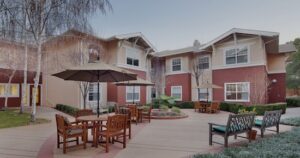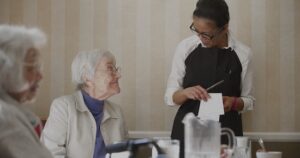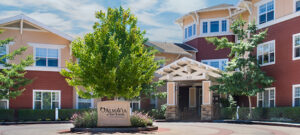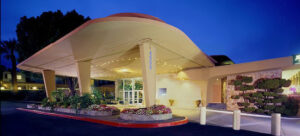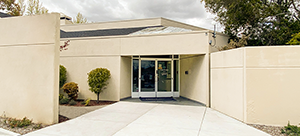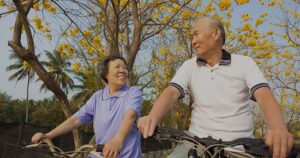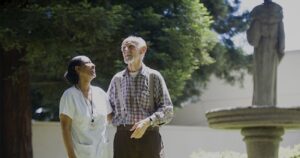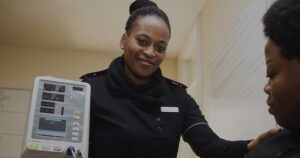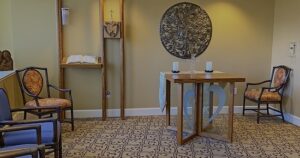As seniors age, it’s more important than ever to maintain an active lifestyle. By exercising regularly, you greatly increase your chances of remaining independent, improving your overall energy, managing pain, boosting your memory, and warding off serious health problems like diabetes, heart disease and some forms of cancer.
As seniors age, it’s more important than ever to maintain an active lifestyle. By exercising regularly, you greatly increase your chances of remaining independent, improving your overall energy, managing pain, boosting your memory, and warding off serious health problems like diabetes, heart disease and some forms of cancer.
If you’re considering a move to assisted living, you’ll find lots of opportunities to stay active. Regardless of your age or physical status, you can reap the benefits of exercise. Of course, you should check with your doctor to be sure you can exercise safely.
In your assisted living community, exercise programs focus on four key areas of your health: balance, strength, flexibility and aerobic conditioning. What are some of the top low-impact exercises you can enjoy in assisted living?
Balance
Maintaining good balance is critical for preventing potentially devastating falls. In your assisted living community, you can participate in classes that help boost balance.
You also can ask for guidance from one of the professional staff members as you perform individual exercises, including:
- Side leg raises performed while holding onto a chair.
- Standing and sitting without using your hands or arms.
- Alternating standing on one foot.
- Walking heel-to-toe by placing your heel right in front of your toes on the other foot as you take steps.
Strength
Strength exercises are vital for maintaining your muscle mass and bone integrity, which can help you remain independent as you age. Strong muscles allow you to get up from a chair, carry your own groceries and complete other important everyday activities.
Lifting weights is one of the best strength-building exercises, and you can maintain a weight routine in your assisted living community. Start with very light weights and build to heavier weights as you get stronger. Experts advise that you should participate in strength exercises for 30 minutes at least twice every week.
Flexibility
Many seniors develop problems with joint mobility as they age. By participating in exercises that promote flexibility, you improve your chances of maintaining your range of motion.
In your assisted living community, you’ll find group exercise classes that promote joint health and flexibility. Some of the best types of exercise to keep you flexible include Pilates, yoga and stretching.
If you prefer to participate in stretching exercises on your own, be sure to consult with a fitness professional to avoid injury. Properly warming up before stretching is critical.
Aerobic Conditioning
If you enjoy group exercise classes, you’ll find opportunities in your assisted living community to keep your heart strong through aerobic activities. Getting your heart rate up on a regular basis also makes everyday activities easier, helping you maintain your independence.
Health experts recommend at least half an hour of moderate-intensity activity every day. In your assisted living community, you can participate in exercise classes, walk on scenic outdoor paths, dance and engage in other activities to get your heart pumping. If you’re just getting started, take it slow, and ask for help if you need it.
Get Fit in Assisted Living
Assisted living communities feature a variety of fitness activities that can help you maintain — and even improve — your balance, flexibility, strength and aerobic conditioning. An active lifestyle can help keep your body and mind healthy while boosting your enjoyment of life.
Sources:
http://www.everydayhealth.com/senior-health/stay-fit.aspx
http://seniorliving.about.com/od/basicexerciseseries/ss/strengthexercis.htm
http://www.everydayhealth.com/senior-health-photos/exercise-ideas-for-seniors.aspx
http://seniorliving.about.com/od/basicexerciseseries/ss/strengthexercis.htm#step2
http://seniorliving.about.com/od/basicexerciseseries/ss/strengthexercis.htm#step3
http://seniorliving.about.com/od/basicexerciseseries/ss/balanceexercise.htm
http://seniorliving.about.com/od/basicexerciseseries/ss/balanceexercise.htm#step2
http://seniorliving.about.com/od/basicexerciseseries/ss/balanceexercise.htm#step5
http://www.helpguide.org/articles/exercise-fitness/exercise-and-fitness-as-you-age.htm
http://seniorliving.about.com/od/exercisefitnes1/a/4seniorexercise.htm
http://seniorliving.about.com/od/basicexerciseseries/ss/stretchexercise.htm
http://www.webmd.com/healthy-aging/features/low-impact-exercises-for-seniors
http://seniorliving.about.com/od/basicexerciseseries/ss/stretchexercise.htm#step4
http://seniorliving.about.com/od/basicexerciseseries/ss/stretchexercise.htm#step3
http://seniorliving.about.com/od/basicexerciseseries/ss/cardioexercise.htm
http://seniorliving.about.com/od/basicexerciseseries/ss/cardioexercise.htm#step2
http://seniorliving.about.com/od/basicexerciseseries/ss/cardioexercise.htm#step3
http://easystretchingexercises.com/5-easy-stretching-exercises-for-seniors
http://www.healthline.com/health/balance-exercises-for-seniors#3

